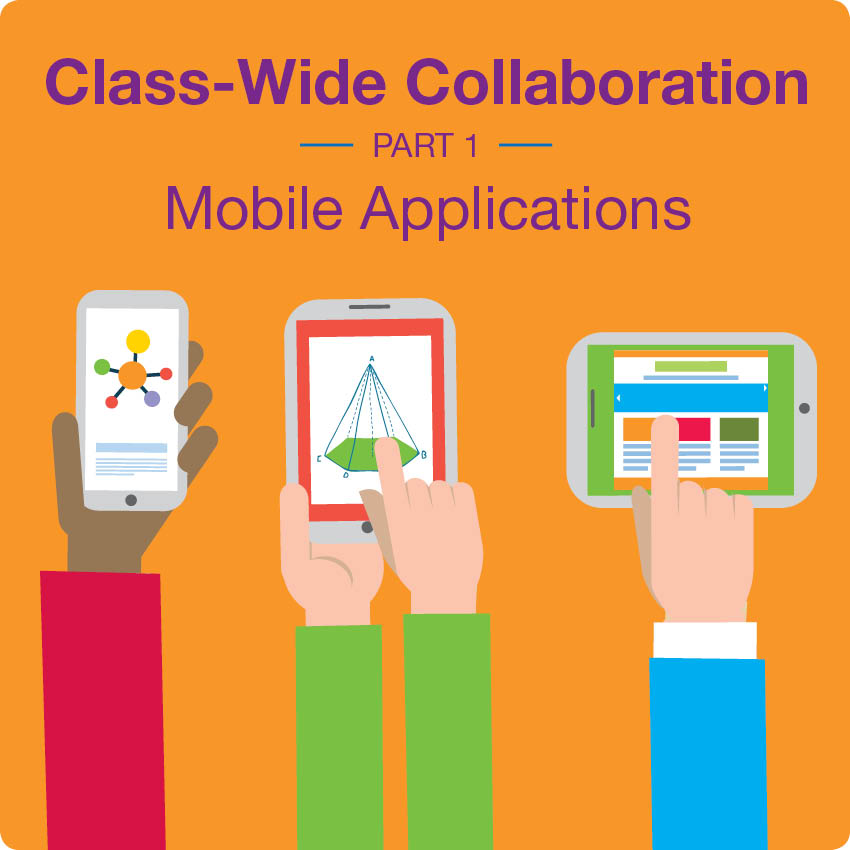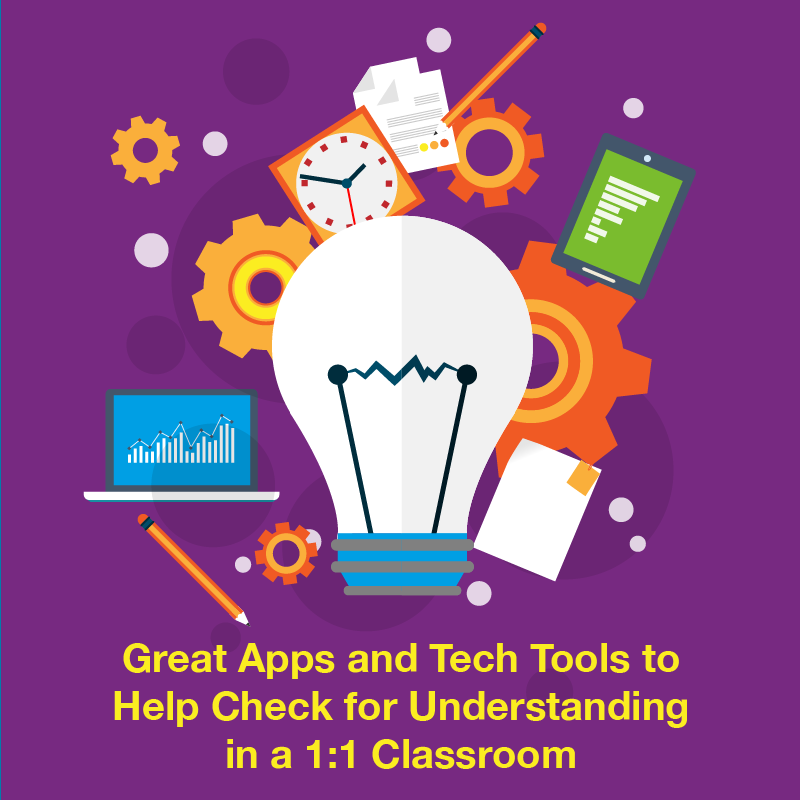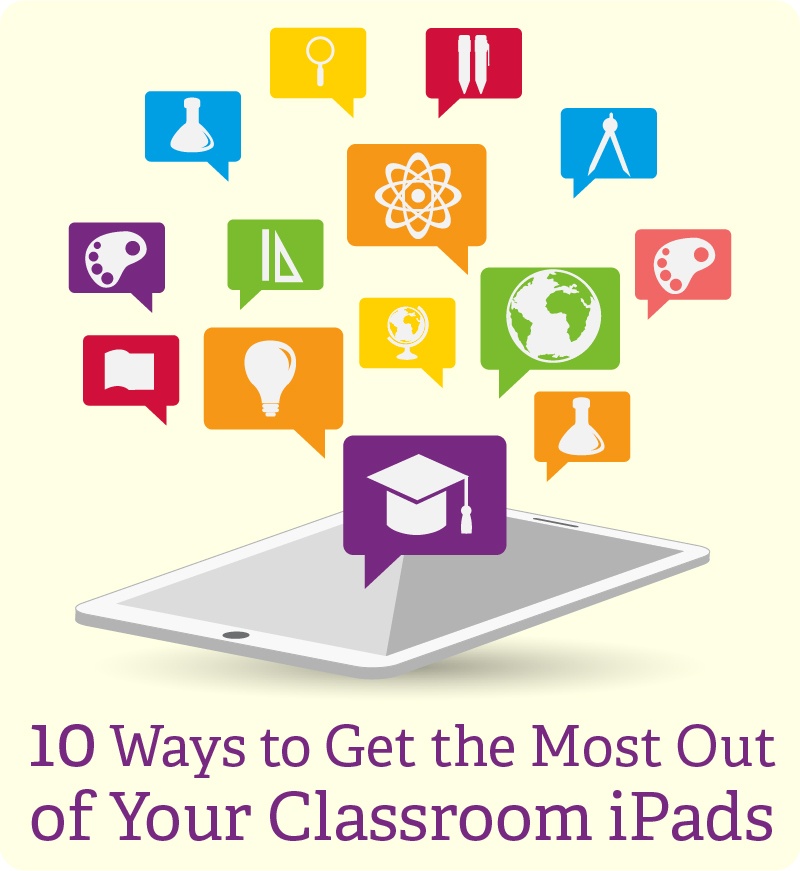Whether it is a school-owned computer or a student BYOD cell phone, classroom management with devices can be challenging. Most students probably see their own device as a gaming/texting/social media gadget—and not as a learning tool. So when teachers ask students to use their devices to learn, and not to play, it can be very challenging. From social media and games to learning tools, most students are highly adept at flipping from one thing to the next, such as hiding apps they shouldn’t be on and masking their social media action. Because of all this, monitoring and managing can be difficult from the outset.
Topics: Classroom Technology, Education Technology, MimioMobile, Mobile Devices, BYOD
One of the advantages to being a building principal is that I get to see what takes place in classrooms all around the school. I love seeing a great strategy in one classroom, then going to the next classroom and sharing it with another teacher. I think we can all agree that there is not nearly enough of this kind of sharing and collaboration in education.
In our school, we have been studying different approaches to formative assessment in the classroom. We looked over about twenty-five different ideas for how to formatively assess, then I asked teachers to try one of the concepts in their classroom and provide me with feedback about the strategy.
Topics: MimioVote assessment, classroom assessment, MimioVote, MimioMobile, Mobile Devices
How to Successfully Incorporate Assessment into the Classroom
“Today, kids spend too much time on the scale and not enough time at the trough.” This analogy of students as farm animals isn’t a beautiful one, but it gets the point across. In the past decade, students have spent a great deal of class time taking assessments (being weighed), which reduces the time available for instruction and learning (eating at the trough). The reasons for this development vary, but the testing requirements of No Child Left Behind are a major reason behind it.
Many of us sometimes feel that our students are “over-assessed,” so it’s easy to have a negative attitude toward testing. But assessments are an essential part of teaching when they are used effectively. The descriptions below include information about what each assessment type is intended to accomplish, as well as some ideas for making it meaningful and effective in the classroom.
Topics: classroom assessment, MimioVote, MimioMobile
Class-Wide Collaboration with Ed Tech: Part 1 - Mobile Applications
It has become clear that student collaboration is now an important focal point of modern education. The Common Core standards found in many states require that students participate in a diverse range of collaborative activities. That’s because teaching students collaborative skills has become paramount to their success in the 21st century global economy.
Collaboration Creates Tomorrow's Successful Workforce
When today’s students enter the workforce, they will be asked to collaborate with others, both in person and via technology. To prepare students to perform their future jobs successfully, many schools have adopted curricula, materials, and lessons centered on the concept of student collaboration. Programs such as College Prep Math (CPM), which requires students to work and to solve problems together as a team, are becoming more common in schools across the country and around the world.
Topics: Education Technology, MimioMobile, Educational Apps
Great Apps and Tech Tools to Help Check for Understanding in a 1:1 Classroom
Whether it’s called a formative assessment, a check for understanding, an exit ticket, or something else, good teachers find ways to gauge their students’ level of comprehension. They know that an important benefit of assessment is that it informs their instruction.
In the traditional classroom, there are three general approaches for gaining this information from students. The first is the oral response: a choral response, an individual answer, or sharing with a partner. The second approach is written – commonly via dry erase boards (“show me” boards) or exit tickets to wrap up the end of the lesson. The third approach is physical. Students can raise their hands – showing a thumbs-up for understanding, or raising one to five fingers as a rating scale. They can also move around the room and “vote with their feet.”
Many of these approaches are the tried-and-true assessment methods of highly effective classrooms. However, today it’s possible for teachers to offer much more efficient methods for students to accomplish the same thing, while at the same time tracking student data to monitor levels of understanding as a class and as individuals. Listed here are some great apps and other tech tools for accomplishing this.
Topics: classroom assessment, MimioMobile
10 Reasons Why I Can't Wait to Go to FETC 2016 (and Why You Should Go, Too)!
It’s almost time for FETC 2016! As always, the four-day event is a fantastic opportunity to greet past colleagues, meet prospective collaborators, and learn from the pros. At FETC you can get hands-on explorations of the latest hardware and software, and learn successful strategies for integrating technology across the K-20 curriculum. As always, the conference will be held in “The City Beautiful” – Orlando, Florida. From city attractions to workshops and the booths (don’t miss Mimio’s booth #835), here’s just a sampling of what you can expect:
Topics: MimioMobile, MimioProjector, Tradeshow, education industry
Enhance and Transform Your Lessons Through Using SAMR
The SAMR Model was developed by Dr. Ruben Puentedura to help teachers infuse technology into teaching. The model allows teachers to evaluate how they are using technology in their instructional practices. “SAMR” is an acronym that stands for four levels in the technology integration process: Substitution, Augmentation, Modification, and Redefinition.
What does each SAMR level look like in the classroom?
Below are various classroom examples of SAMR. As one moves through the levels, the technology becomes seamlessly woven into teaching and learning to encourage higher order thinking.
Topics: MimioMobile, MimioStudio, SAMR
Top 18 Reasons Chromebooks Could Be the Device for You
Tablets and Smartphones and Laptops – Oh, My!
There are so many devices to choose from for your classrooms. Sometimes it is really hard to know what makes one a better choice than others. And by “better,” I mean a better fit for your educators’ and students’ needs, because that’s really what will determine what is the right device for you. Over the next few weeks, we’ll be featuring the top reasons why you might want to choose one type of device over another. In this post we’ll focus on Chromebooks.
Topics: Education Technology, MimioMobile, Mobile Devices, Google Classroom
How to Create a Paperless Classroom — One Educator's Story
My History Classroom, “Redefined”
Throughout my teaching career in a semi-urban district outside of Cleveland, Ohio, I have tried to inspire my students to achieve more by bringing my knowledge and passion for Social Studies into my classroom. However, as many of you have probably noticed, history is a topic that simply does not grab 21st century learners. Today’s students are accustomed to working with mobile devices, glancing at quick headlines, doing Internet-only research for projects, watching short YouTube videos, and reading and composing social media buzz. When today’s tech-savvy students are presented with traditional textbooks, worksheets, and magazines that are older than they are, they quickly become disengaged learners. It’s for this reason that several years ago I began a personal quest to “redefine” my instructional strategies, methods, and materials for the 21st century. The end result is my highly successful paperless classroom!
Topics: Classroom Technology, classroom assessment, MimioMobile, Classroom Collaboration, SAMR
From exploring a virtual library to creating a rock video, see what your iPads can do!
Using iPads in daily activities can be easier than you think.
One of the biggest trends in educational technology this year is the use of personal devices to create an engaging 1:1 classroom setting. But while 1:1 initiatives are gaining in popularity, many fail to meet the teacher’s expectations over time. It’s generally not the technology that’s at fault. Most often the challenge stems from not knowing how to best to use these devices in the classroom. The use of personal devices can be easier than you think, and the devices offer a wide range of educational uses.
Topics: MimioMobile, Mobile Devices











